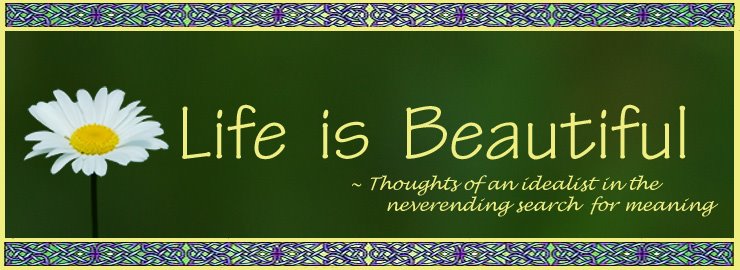And I have to say it now
It's been a good life all in all
It's really fine
To have a chance to hang around
And lie there by the fire
And watch the evening tire
While all my friends and my old lady
Sit and pass the pipe around
And talk of poems and prayers and promises
And things that we believe in
How sweet it is to love someone
How right it is to care
How long it's been since yesterday
And what about tomorrow
And what about our dreams
And all the memories we share
~~ Poems, Prayers, and Promises by John Denver
When I was nine, my babysitter gave me a 45 (that's a record, for those of you born after 1985) of John Denver's Take Me Home, Country Roads (apparently I sang it so often she got annoyed….) On the flip side was a little song called Poems, Prayers, and Promises. I remember sitting in my basement playroom the first time I listened to that song. At the ripe old age of nine, I sat with tears streaming down my face, reveling in the profundity and wisdom of John's message. It is a good life after all. And I promised myself that I would never allow life's challenges to cloud that perspective.
Now, in midlife, I still tear up when I listen. Because there are so many people who aren't happy despite what they have. Why are we so easily dissatisfied? Interestingly, a study was done in the late 70's in which accident victims, lottery winners, and a control group were polled on their life satisfaction. They found that after an initial period of adjustment (which was marked by elation for the lottery winners and depression for the paraplegics) they returned to their usual level of happiness. In other words, those who accepted and found positives in life beforehand, continued to do so. And complainers continued to be complainers.
I've recently found two new pearls of wisdom in The Science of Happiness by Stefan Klein, PhD. First, it's not enough to be happy-- we need to be aware of our happiness. My mother always said we need to count our blessings… science now says that she was right (LOL-- don't tell her that… she already says "told you so" more often than I'd like.) An Italian psychiatrist developed "Well-Being Therapy" to use with depressed patients. He asked them to keep a happiness diary in which they described in detail any happy moment in their day as well as their feelings. It was very successful-- after ten weeks their depression had lifted. When we keep track of positive moments our attention is brought to what makes us happy. And putting it in writing prevents our brain from diminishing the moment or dismissing the happiness later.
And the other bit I learned is that we are programmed to want everything (ack!-- we're doomed!). And, of most interest, the anticipation of something is far more powerful than the pleasure when we receive it. Apparently, when a reward is in sight, certain dopamine neurons fire like crazy so we experience pleasure. This was first demonstrated with monkeys, and later with humans. Monkeys were given apples. The sight of the apples started the neurons firing. Then, researchers lit a lamp before presenting the apples. Soon, the neurons started firing when the lamp was lit. But when an apple was offered, the neurons stopped firing. It's not the reward, but the expectation that gives us pleasure. So, we could lead a perfect life and still be unhappy… because we get bored. It seems to me that the best way to prevent this is to add variety to our lives. Studies have also shown that we don't have to increase the stimulation or constantly feel the need to raise the bar, because the memory of our expectation response isn't very long. Instead, we just need to rotate our sources of pleasure. (In other words, don't get into a rut!) Happiness doesn't come from getting something new. It comes from spicing up what we already have.
So go put a new spin on an old activity, surprise someone you love, try something that you haven't done in years. Maybe we can create happiness with what is already in our lives.




